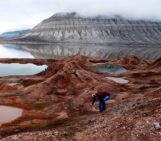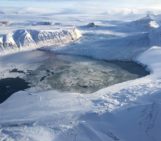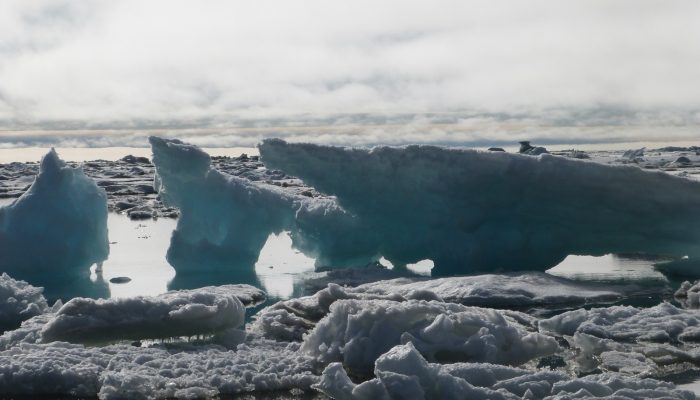
The global climate system is complex. It is composed of, and governed by, a plethora of interconnect factors. Solar radiation, land surface, ice cover, the atmosphere and living things, as well as wind and ocean currents, play a crucial role in the climate system. These factors are intricately connected; changes to some can have significant effects on others, leading to overall consequences for the global climate.
Since the 1980s, sea ice has been decreasing gradually as a result of global warming. But the impact of retreating sea ice on the global climate system aren’ t yet fully understood. A new study published in the EGU’s open access journal, Atmospheric Chemistry and Physics, attempts to unravel the complex feedback systems between Arctic sea ice extent and cloud cover in the region.
The researchers, lead by Manabu Abe, of the Institute of Arctic Climate and Environmental Research in Japan, argue that shrinking sea ice extent in the Arctic is the cause for increased cloud cover in the region. This, in turn, further enhances the feedback processes of Arctic warming because it cause sea ice to retreat further.
Sea ice, is the ice that ‘grows’ as water in the poles is exposed to very low temperatures over long periods of time. Although some waters are covered by ice year round, most sea ice forms during the cold winter months and melts in the summer.
Global climate influences the annual growth of sea ice. This year, ocean waters in the Arctic are failing to freeze and sea ice isn’t forming as quickly as it normally would. Alarmingly, October 2016 registered the lowest sea ice extent since records began.
Scientists think that the unusually low amount of sea ice formed in the Arctic this year is the result of extraordinarily hot sea surface and air temperatures, which are essentially stopping the formation of ice on ocean waters.
But sea ice extent also influences global climate. Solar radiation is absorbed and reflected by the Earth’s atmosphere (including clouds) and surface. Ice is more reflective than water and land. So as ice cover across the globe decreases, so does the planet’s ability to reflect solar radiation, causing the Earth’s surface to warm further, which, in turn, causes more melting of ice. This is know as the ice-albedo feedback loop.
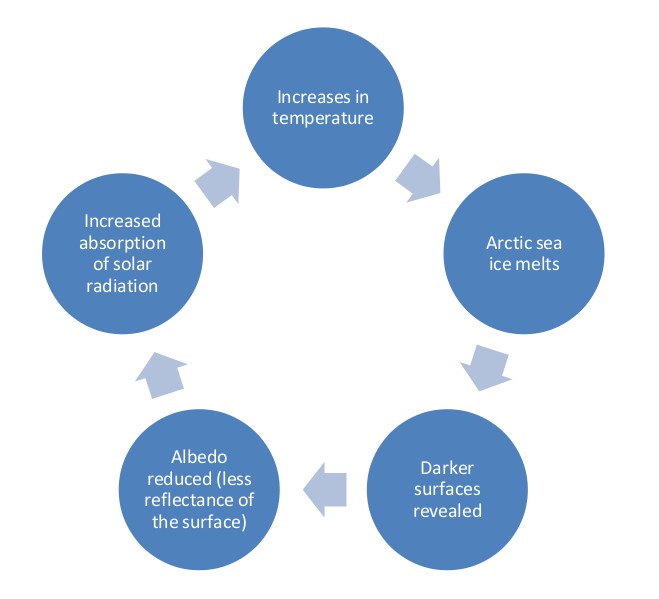
Schematic showing the ice albedo feedback which can leads to amplification of warming in the Arctic.(Credit: Met Office).
The effects of shrinking sea ice are not limited to surface warming. Ocean heat uptake and storage can be affected, as can be the formation of low-level cloud cover over the Arctic. While the surface of clouds reflect solar radiation, they also prevent heat from being lost from the Earth’s surface. That’s why, often, on overcast nights temperatures are higher than on clear nights.
A study back in 2012, proposed that increased cloud cover in the Arctic enhanced the radiation emitted by the atmosphere and clouds – known as longwave radiation (DLR) -, causing higher surface air temperatures in autumn. This would extend the sea ice melting season. But there is little data which measures radiation at the surface, making the claim controversial.
Other studies have used computer simulations of the global climate, to mimic the effects of reduced sea ice conditions on cloud cover. They show that the areas of open ocean created by the reduction in sea ice mean more moisture is transported from the ocean to the atmosphere, resulting in the formation of more clouds. But the simulations are not very good at representing polar clouds and so the results aren’t entirely reliable.
Now, Abe and his coworkers, used a new state-of-the-art climate simulation to try and shed light on the problem. They included data from as far back as 1850 in their study, as well as making it more robust by taking into account other factors, such as changing sea surface temperatures, greenhouse gases, aerosols and land use (from the 1980s to 2005), which might affect the formation of clouds.
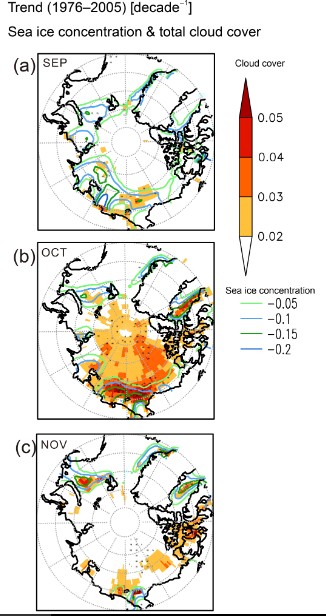
Geographical map of the simulated linear trend in the total cloud cover (shaded) and sea ice concentration (contours) in (a) September, (b) October, and (c) November during the period 1976–2005. The units are decade. From M.Abe et al., 2016
The new simulation found that between 1976 and 2005, Arctic sea ice decreased through the summer and autumn months (which is corroborated by satellite observations). Meanwhile, cloud cover increased throughout autumn, winter and spring, reaching its peak in October.
The researchers argue that the link between the two trends is not coincidental. Reduced sea ice extent in the autumn months,coupled with a decrease in atmospheric temperatures, means more heat is exchanged from the oceans to the atmosphere, which fuels the formation of clouds. More clouds mean downwards longwave radiation (DLR) in October is increased by as much as 40 to 60% (compared with clear autumn skies). With less heat being reflected off the surface of the Earth, sea ice extent decreases further due to melting and so a feedback loop (not dissimilar to the ice-albedo loop) is established.
The results reinforce the findings of previous studies, but some questions remain unanswered. The scientists point out that, it is not only important to understand how much cloud cover increases by as a result of shrinking sea ice extent. In a warming climate, how increases in air temperature and humidity affect the vertical structure of clouds will play an important role in the sea ice-cloud feedback loop. The vertical profile of a cloud also strongly influences how and how much DLR is reflected back on the Earth’s surface, so there is a need for a better understanding of the feedback processes related to clouds too.
By Laura Roberts Artal, EGU Communications Officer
References
Abe, M., Nozawa, T., Ogura, T., and Takata, K.: Effect of retreating sea ice on Arctic cloud cover in simulated recent global warming, Atmos. Chem. Phys., 16, 14343-14356, doi:10.5194/acp-16-14343-2016, 2016.
Wu, D.L., and Lee, J.N.:Arctic low cloud changes as observed by MISR and CALIOP: Implication for the enhanced autumnal warming and sea ice loss, J. Geophys. Res.-Atmos., 117, D07107, doi:10.1029/2011JD017050, 2012


